What’s in a word?
Magnus Hirschfeld
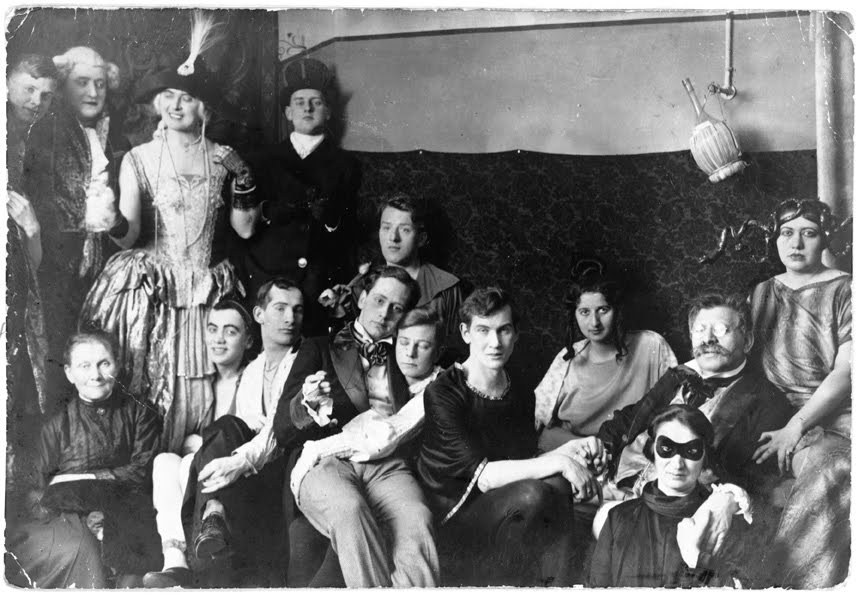

Over the last year, Brexit, Trump and the Right have been winners, the liberal Left losers this year. Leonard Cohen’s “Democracy is coming to the USA” is darkly ironic. Apart from Cohen, the arts world has also lost Alexis Arquette, David Bowie, Prince, Lou Reed, Alan Rickman, Gene Wilder and many more including too many comedians, just yesterday, Napoleon Solo – Robert Vaughn. Cohen died aged 82, the day before the American Presidential Election. At least, he now joins 1960s partner Marianne, to whom he wrote shortly before her death a few months back:
“Well Marianne, it’s come to this time when we are really so old and our bodies are falling apart and I think I will follow you very soon. Know that I am so close behind you that if you stretch out your hand, I think you can reach mine…. Goodbye old friend. Endless love, see you down the road.”
Cohen met Marianne Jensen on the Greek island of Hydra in 1960, whilst seeking some healthy sun, as recommended by his dentist! A woman of wisdom and beauty, she captivated him and had recently been left by her Norwegian novelist husband, and so began a love affair that lasted the 60s.
Cohen sang that before he fell for Marianne he “used to think [he] was some kind of Gypsy boy”. He was inspired by the Spanish poet Lorca, assassinated, aged just 38 during the Spanish Civil War.
At an awards ceremony in Spain, he said that in search of a voice, “It was only when I read, even in translation, the works of Lorca that I understood that there was a voice.”
“It is not that I copied his voice; I would not dare. But he gave me permission to find a voice, to locate a voice, that is to locate a self, a self that is not fixed, a self that struggles for its own existence. As I grew older, I understood that instructions came with this voice. What were these instructions? The instructions were never to lament casually. And if one is to express the great inevitable defeat that awaits us all, it must be done within the strict confines of dignity and beauty.” Leonard Cohen’s acceptance speech at award of Prince of Asturias literature prize, 2011 (Other awards)
Musically, Cohen also learned just five or six Flamenco chords from a Spanish guitar teacher who killed himself before his fourth lesson.
“Journalists, especially English journalists, were very cruel to me. They said I only knew three chords when I knew five!”
Nonetheless, they became the musical basis of his mournful music – that, and the gravitas of his gravelly “golden voice”.
It was, however, the combination of his sounds with the poetry of his own soul searching that leant it real depth, despair, darkness and désolé.
Your letters they all say that you’re beside me now.
Then why do I feel alone?
I’m standing on a ledge and your fine spider web
is fastening my ankle to a stone.
Now so long, Marianne, it’s time that we began …
For now I need your hidden love.
I’m cold as a new razor blade. (So Long, Marianne)
(So Long, Marianne)
Cohen once joked that his record company should package razor blades with his records. His sometimes subversive humour amidst the angst and anxiety, strangely softened the pervasively painful lyrics.
“Any startling piece of work has a subversive element in it, a delicious element often.”
He sought in his own way “to be free” (‘Like a bird on the wire‘) and his writing in all forms drew you in if you were among the “inner-directed adolescents, lovers in all degrees of anguish, disappointed Platonists, pornography-peepers, hair-handed monks and Popists.”, as he wrote to his publisher.
More positively, he said and sung:
“There is a crack in everything, that’s how the light gets in.”
(Anthem)
Recent Nobel Literature Laureate, Bob Dylan, would probably acknowledge that he could have shared the prize with Cohen. The pair were discovered by the same music scout in the early 1960s, and whilst many – including himself, regarded Dylan as the number one, (Dylan joked he was number zero to Cohen’s one) Cohen was a strong contender for the number two spot as greatest songwriter for a generation.
“Second only to Bob Dylan (and perhaps Paul Simon), he commands the attention of critics and younger musicians more firmly than any other musical figure from the 1960s who is [was] still working at the outset of the 21st century.” – Bruce Eder
Annoyingly, for Cohen at least, he worked hard at what came more easily to Dylan. What took Cohen five years to write Dylan could knock out in hours or less. Most famously, ‘Hallelujah’ took 5 years to write, probably down to the near-infinite number of verses, and almost a generation to rise to its modern reputation and dubious honour of being on the Shrek soundtrack.
Cohen came from a Canadian-Lithuanian-Polish line of successful and literate Jews, Talmudic scholars, businessmen, and synagogue founders. He practised his Judaism, but that didn’t interfere with his spiritual exploration of other beliefs from Scientology to Buddhism in the 1970s, leading to his ordination as a Zen Buddhist monk in the 90s. Of Jesus of Nazareth he said:
“I’m very fond of Jesus Christ. He may be the most beautiful guy who walked the face of this earth. Any guy who says ‘Blessed are the poor. Blessed are the meek’ has got to be a figure of unparalleled generosity and insight and madness…A man who declared himself to stand among the thieves, the prostitutes and the homeless. His position cannot be comprehended. It is an inhuman generosity. A generosity that would overthrow the world if it was embraced because nothing would weather that compassion. I’m not trying to alter the Jewish view of Jesus Christ. But to me, in spite of what I know about the history of legal Christianity, the figure of the man has touched me.” Leonard Cohen: In His Own Words (1998)
Perhaps he was a depressed Spock-lookalike figure, at times, but he also pursued life in all its fullness. From drugs to drink to women and wisdom, he ploughed life’s lows in search of its highs. In the end, he was neither a pure Buddhist nor a “really good junkie” but somehow the former, even as a drug in some way itself, held off the latter.
As he turned 65, he finally felt at peace with himself and the world, to some degree at least. He described it as acceptance and learning to ignore rather than solve himself.
Kurt Cobain wrote in Nirvana’s ‘Pennyroyal Tea’ (1993)
“Give me a Leonard Cohen afterworld
So I can sigh eternally.”
After his suicide, Cohen wished he’s been able to speak to Cobain:
“I’m sorry I couldn’t have spoken to the young man. I see a lot of people at the Zen Centre, who have gone through drugs and found a way out that is not just Sunday school. There are always alternatives, and I might have been able to lay something on him.”
He leaves behind, millions of devotees, missing the mournfulness and aged adolescent agonising of his search for meaning. Even now, his songs remain poignant, if somewhat ironic, like ‘Democracy‘, and it still feels like ‘You want it Darker’ (2016) lies ahead, but perhaps too, we’ll also find the peace, that he found and now rests in.
“I’ve seen the nations rise and fall,
I’ve heard their stories, heard them all.
But love’s the only engine of survival.”
“Sail on, sail on
O mighty ship of State
To the shores of need
Past the reefs of greed
Through the squalls of hate
Sail on, sail on, sail on, sail on”
(Democracy)
It’s 70 years today since the liberation of Bergen-Belsen (#Belsen70), another example of man’s inhumanity to man and what happens when you scapegoat an entire – or rather several – people groups, dehumanise, persecute, incarcerate and attempt to wipe them out. It is also 33 years since I visited Belsen as a 15 year-old, the same age as the famous diarist, Anne Frank, who died there just months before its liberation. It left indelible memories on me and a life-long belief in human rights for all people.
The concentration camp had various purposes during the Second World War, from Soviet and Italian POWs, Jewish internment, as well as housing other people groups including Czechs, Poles, homosexuals, Christians who opposed Nazism, Romani and Sinti ‘gypsies’.
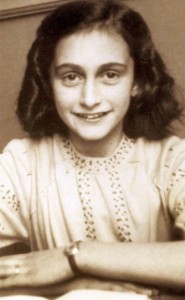
The Dutch Jewish teenager Anne Frank is remembered through her diary “The Diary of a Young Girl”. The UK based Anne Frank Trust, whose motto is “Challenge Prejudice, Reduce Hatred” ran a social media campaign on 14 April under the hashtag #NotSilent in which people recorded themselves reading one-minute extracts from her diary about life in hiding in Nazi-occupied Netherlands.
“We’re much too young to deal with these problems, but they keep thrusting themselves on us until, finally, we’re forced to think up a solution, though most of the time our solutions crumble when faced with the facts. It’s difficult in times like these: ideals, dreams and cherished hopes rise within us, only to be crushed by grim reality. It’s a wonder I haven’t abandoned all my ideals, they seem so absurd and impractical. Yet I cling to them because I still believe, in spite of everything, that people are truly good at heart.
It’s utterly impossible for me to build my life on a foundation of chaos, suffering and death. I see the world being slowly transformed into a wilderness, I hear the approaching thunder that, one day, will destroy us too, I feel the suffering of millions. And yet, when I look up at the sky, I somehow feel that everything will change for the better, that this cruelty too will end, that peace and tranquillity will return once more. In the meantime, I must hold on to my ideals. Perhaps the day will come when I’ll be able to realize them!” – 15th July, 1944, Diary of A Young Girl, Anne Frank
Her hopefulness echoes the words of Nelson Mandela:
“People must learn to hate, and if they can learn to hate, they can be taught to love, for love comes more naturally to the human heart than its opposite” – Nelson Mandela
Another internee was Josef Čapek, from what is now the Czech Republic, a Cubist painter, cartoonist, writer and playwright. He wrote the utopian play “Land of Many Names” and is credited by his brother as being the first to invent and use the word “robot”. He was critical of Hitler and Nazism and was arrested in 1939 upon the invasion of Czechoslovakia, though he managed to write “Poems from a Concentration Camp” at Bergen-Belsen, though died in 1945 shortly before liberation.
Some 50-70,000 are though to have died, some 30,000 of them Jewish, among the 120,000 held there, escalating to 20,000 a month before liberation put a stop to it. It was far from the worst of camps, and yet it was enough to shock those that discovered it, almost by accident.
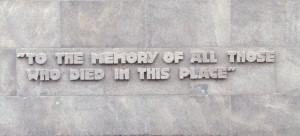
The camp was liberated on April 15, 1945, by the British 11th Armoured Division who discovered approximately 60,000 prisoners inside and at satellite camps, mostly emaciated and/or seriously ill with typhus or similar. Lying, unburied, around the camp lay 13,000 corpses and even some still living among them. Another 14,000 died of infection and starvation in the 10 weeks following liberation.
The BBC’s Richard Dimbleby was there and reported:
“Over an acre of ground lay dead and dying people. You could not see which was which… The living lay with their heads against the corpses and around them moved the awful, ghostly procession of emaciated, aimless people, with nothing to do and with no hope of life, unable to move out of your way, unable to look at the terrible sights around them … Babies had been born here, tiny wizened things that could not live…This day at Belsen was the most horrible of my life.”
The BBC also recently interviewed one of the few remaining survivors, Gena Turgel.
The SS destroyed most of the inmate records and the British, after making the SS build mass graves for the unburied, then destroyed the camp by fire because of the disease there.
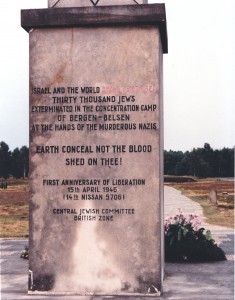
Whilst nature was allowed to take over the remains, in the way that only nature does, the mass mounds of graves containing up to 5,000 people each remained obvious. Over the following months wooden monuments were erected by varying groups and a year later a stone monument was erected by the Central Jewish Committee of the British Sector.
We ignore growing ethnic & sectarian division and hatred at our peril – particularly in the #MENA region. We must never forget #Belsen70
— Ollie Cornock (@OllieArabia) April 15, 2015
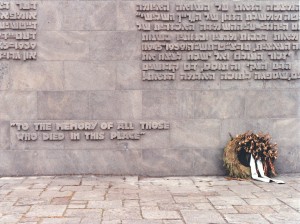
In 1952 Germany’s president, Theodor Heuss, called on the German nation to never forget what had happened at Bergen-Belsen. Nor should we, whether Jew, Christian and other faiths, gypsy, mentally ill or disabled, political enemy or prisoner of war, all deserve human rights and not inhuman treatment or attempted genocide.

An apparently confident young 13yo Jewish teen living in Oakland, California, has come out as trans with the full support of his sister and parents. Tom Sosnik comes across as mature, self-assured and brave, but in no doubt of the hard path ahead. He cites Leelah Alcorn at the beginning and end of his coming out speech and both, thanks, and calls for the support of, his peers and community.
His YouTube video, published 16 March 2015, comes with the following statement by him:
This is how I came out to my community as trans.
Please share my story and my message with your loved ones.
To all those struggling to embrace their true and authentic gender or sexuality, I want you to know that if no one else accepts you, I always will. Rest in power, Leelah.
“On December 28, 2104, Leelah Alcorn a 17 year old trans woman committed suicide because her family didn’t accept her. This made me want to act on a subject that has been bothering me for quite a long time.
All of sixth grade I struggled with my gender identity and I’m now embracing my truth. For a while, I dismissed the fact that I hated my body, I pretended to be content with what I was assigned until at a certain point I broke. I went through a series of horrible breakdowns and I would stand under the water in the shower crying. I knew I wasn’t happy but it didn’t seem fair to me that everyone else around me was. They didn’t spend all their time thinking about how much they hated being categorised as a woman. I didn’t share that same feeling, in fact, I felt the opposite.
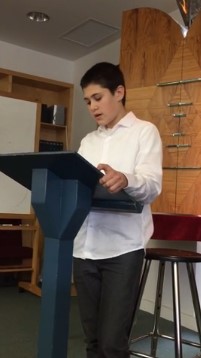
For some of you, this may come as a shock and for others, well you knew or thought I was transgender, well here’s your reassurance – I am no longer Mia, I never really was and now I finally stand before you in my true and authentic gender identity, as Tom. I stand before you as a 13 year old boy.
I understand that this will be a difficult adjustment but I hope and trust that you will treat me with respect and thoughtfulness. So for those of you who are having trouble that is completely understandable. You have known me as a girl for over a year and it is hard to understand that I never was that girl. I want to tell you as a I consider you all my friends, well most of you – no I’m kidding. In my heart I am still the same person, whether you like that person or not, it’s me. So here I am, no longer Mia Sosnik, a 13 year old girl, that you thought you knew, but Tom.
I imagine that some of you will have questions and I am open to answering them at any time they come to you. I trust that you are all mature enough to understand which questions are inappropriate, disrespectful or hurtful. Please feel free to ask me because after all I know the most about my transition. Please talk about this with your parents and your family but I ask of you really not to talk about it with your friends, it’s not – gossip worthy.
If there’s something you want to say I’m happy to talk with you and I really hope that you all will support my decision to embark on a harder route in life as the boy I truly am. Any form of support I receive with much gratitude and I hope that everyone can really support me because you guys are like my second family. And if you support me, I will feel like the luckiest boy in the world. Thank you for letting me share my story.
I want to just tie it back to what I said at the beginning. After reading Leelah’s suicide letter I came to really appreciate the support I have in my family in my community that she never got. Thank you all for making me feel safe enough to openly be myself.”
The positive references to Leelah Alcorn are all the more uplifting given the spate of US trans teens suicides recently, and the lack of recognition even in death by many of their families. Overnight, it was desvestating to hear of yet another suicide as 18 year old Blake Brockington took his life. He was the first Charlotte, NC trans homecoming king last year. This, only weeks after Ash Haffner, another Charlotte trans man ended his life.
Furthermore, some have argued that the sharing of Leelah Alcorn’s suicide letter would inspire copycat suicides, rather than in the case of Tom Sosnik, an inspired coming out, in part, because of her.
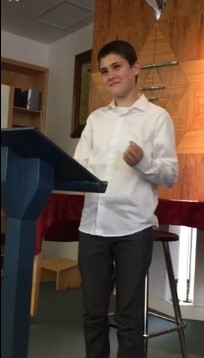
Both of Tom’s sisters have been “meaningful members of his support system“, and one of them, Gil Sosnik, shared his story and video on facebook:
Last week, my 13 year old brother came out as trans to his school and community in a really moving naming ceremony and we were able to capture it on camera. Seeing how much his words have inspired and touched the family and friends in his own network, Tom began to see that there was something about his speech that was universal and humanizing, something that could empower trans* and otherwise gender nonconforming folks while also conjuring empathy and understanding among allies. Watch and share if you are moved by his story.
It has been clearly demonstrated that family support has a huge impact on the mental wellbeing of transgender youth and according to a 2012 Canadian report, can lead to a:
“93% reduction in reported suicide attempts for youth who indicated their parents were strongly supportive of their gender identity and expression”
Without that support, some 57% of young trans people attempted suicide, even higher than the averaged-out figure for trans of all ages and domestic backgrounds. (See more on suicide risks)
Another LGBT suicide has recently been put down to religious non-acceptance in the harrowing story of gay repression and rejection in the life of a successful Muslim Doctor in the UK.
More positively, Tom’s family and religious background is in complete contrast to the religious home life of Leelah Alcorn which saw her sent to Christian therapists and undergo conversion therapy to try and stop her being trans. A path which was no doubt a contributing factor to her suicide and is categorically dismissed as psychologically sound or helpful by the APA.
Reparative or Conversion Therapy seeks to turn someone from their innate sexuality or gender identity by positively encouraged, aka forced, heterosexual and birth sex gender “appropriate” roles. Of course the concept of appropriate comes from stereotypical concepts of socio-familial and sometimes all-out religious traditional understandings. This kind of aversion therapy, whether of LGB or Trans people, is more likely to increase suicide risk than prevent it. The APA argues that:
“reparative therapy poses a great risk, including increasing the likelihood or severity of depression, anxiety and self-destructive behavior for those undergoing therapy.”
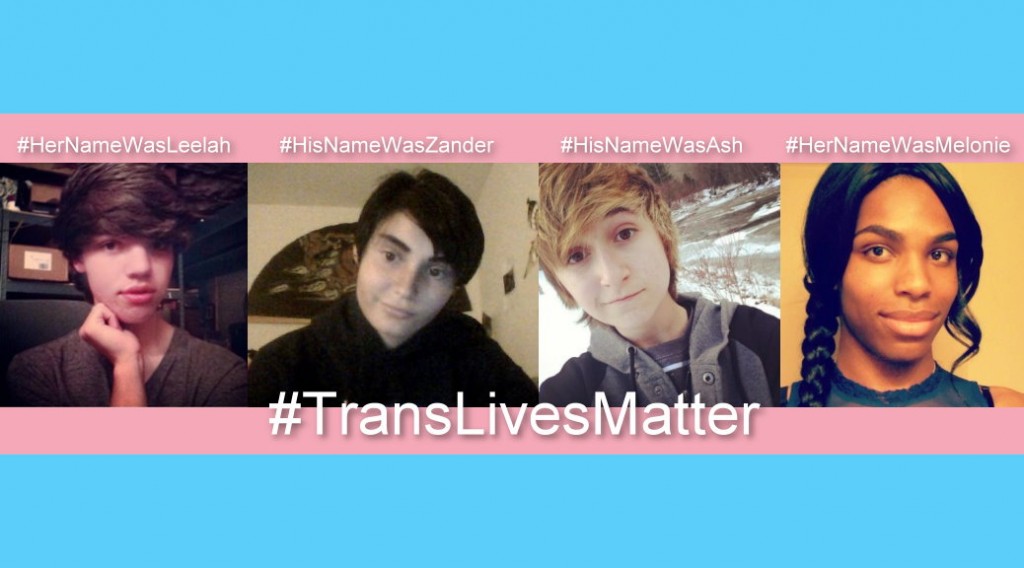
Dr. Ken Zucker is Psychologist-in-Chief and Head of the Gender Identity Service in the Child, Youth, and Family Program at CAMH, Ontario. The American psychologist and sexologist, and GIC head at Toronto’s Centre for Addiction and Mental Health, is also on the APA’s DSM-V committee. Just last week CAMH suspended all trans admissions and treatments by Zucker and has put the whole programme under review.
“The APA, responding to criticisms by LGBT activists, point out that Zucker does not advocate reparative therapy for teens and adults, not for gays and lesbians at any age, but only for the trans community.”
Well that’s ok then – “only for the trans”! This is 2015 and being trans is still considered a mental illness, a mental struggle – yes, but it is not something that is aided by disparaged and unethical reparative therapy and pathologising treatment.
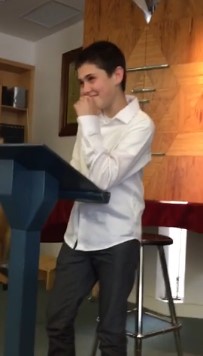
Tom’s own family is Jewish and seems to have positively supported his coming out, posting nothing but proud affirmations on Facebook whereas Leelah was banned from using social media and cut off from her friends and support network.
Tom Sosnik, his family and community, are an example of how coming out as trans, and/or LGB, should be handled – with bravery, acceptance, and support. He and his family embody the “fixing of society” that Leelah Alcorn called for.
best herbal supplements sex drive cbd gummies and erection extenze fast acting male enhancement long lasting sex without pills top gun male enhancement pills safety of rlx male enhancement does maca root help with sex drive rhino 200k pill review male sex pills onenight stand over the counter penis enlargement pills pills for stronger erection otc alpha q male enhancement reviews 10 pack male enhancement pills top 10 natural erection pills medically enlarging a penis does male enhancement stiff nights work what drugs can help with erectile dysfunction vegas strips male enhancement reviews diet while using ed pills consumer reports male enhancement productsedema from blood pressure medication low blood pressure reasons and treatment which blood pressure medications protect kidneys blood pressure medications and weight gain alcortin blood pressure medication what is a cheaper version of bystolic blood pressure medication blood pressure medication at night time cinnamon blood pressure medication b blood pressure medication how to lower high blood pressure fast without medication naturally low blood pressure and chicago medical proven ways to lower your blood pressure without medication high blood pressure medication clonidine what are common side effects of high blood pressure medication medications taken for high blood pressure do high blood pressure medications thin the blood high blood pressure hypertension diagnosis and treatment mayo mayo clinic accent seasoning and blood pressure medication prednisone and blood pressure medication can i just stop taking my blood pressure pills